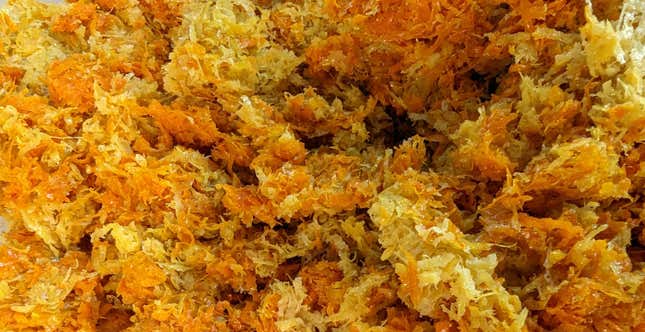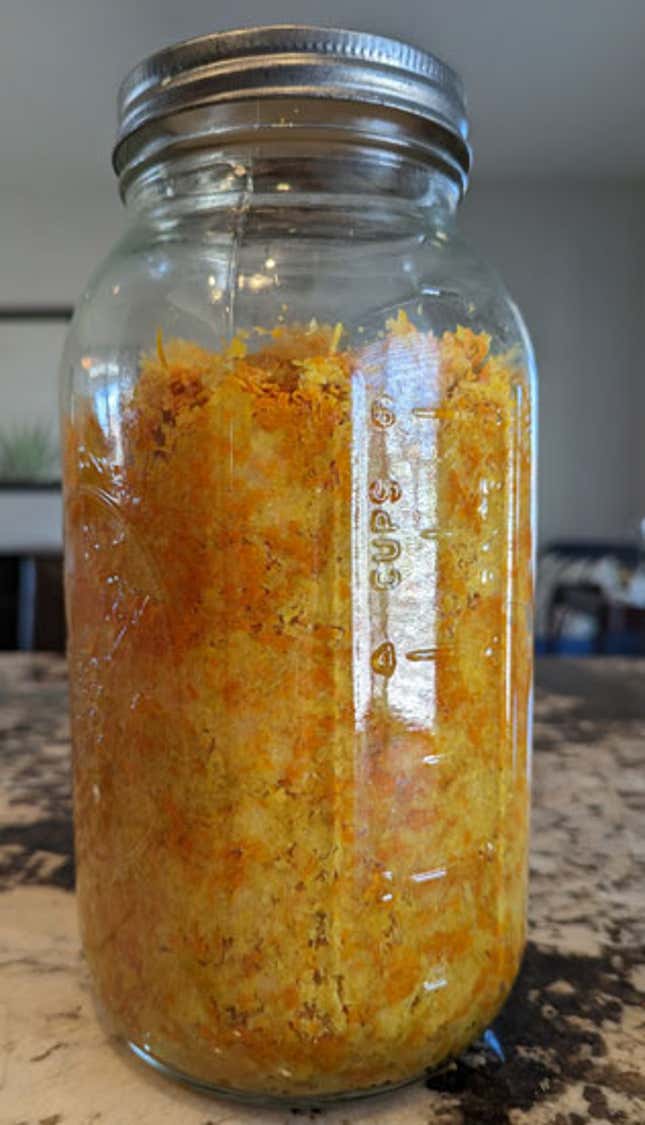Yuzu koshō is like sunlight on your tongue. A fermented paste of yuzu, chilies and salt, it brings the umami, but with a brightness you only get from fresh citrus. Some foodie friends and I noticed it in a soy dipping sauce at dinner in New York. It was a completely new and unique taste none of us had experienced before. We tried to identify what it was, and when we dived into a broiled fish later in the night, realized it was dressed with the same flavor bomb. The waiter smiled, “That’s the koshō,” he explained, clearly used to doing so. Thus began my obsession.

You can buy yuzu koshō, but I am driven to ferment things myself, so I wanted to understand koshō, and understand it deeply. Fresh yuzu is incredibly expensive and hard to come by in the United States, but it’s what you’d get if you crossbred a lemon, lime and orange. There is a hardy yuzu that has been bred for the U.S., and I’ve already reserved one, so hopefully they’ll be more available in the future.
Until then, we’ll have to make do by taking the koshō-making process and applying it to other fruits and vegetables.
Citrus koshō
Table of Contents
If there is citrus in my house, I’m zesting that citrus and adding it to my koshō. You can buy a mess of citrus to start with, or do what I do, and snowbird to a location with an abundance of citrus. I spent two days in Arizona over the winter juicing citrus with friends like a crazy person, insisting on zesting every single grapefruit, orange, or lemon that went through my kitchen. All that zest became a gloriously colored koshō in a half gallon jar, that is the obsession of all who visit. You can make your own on any scale you’d like, easily.
Ingredients:
- Citrus zest (Use any citrus you want, but a mixture yields the best results, in my opinion.)
- 15% non iodized salt by weight
- Hot peppers, to taste
Take all the zest you can get your hands on and weigh it. Do the math to calculate 15% of the weight of the citrus, and add that amount of salt to your food processor. Pulse the two together in quick bursts, for eight seconds or so. Put it in a bowl and set it aside.

Now you’ll add the peppers, but only as many as you’ll enjoy. If you want very spicy koshō, I recommend jalapeños or thai chilis, but remember, a little goes a long way. Personally, since I only enjoy a light lick of fire in my paste, I add 5% by weight of the entire paste, including salt. I cut the pepper in half, remove the seeds, and add it to the food processor and pulse it again, just until the pepper is integrated. Add peppers sparingly, one at a time. They’ll mellow through fermentation, but not by much. You don’t even have to add peppers at all if you prefer, you can just use citrus, but I’d hate for you to ruin a batch by over-spicing it.
Now take the mixture and put it in a jar with an airlock. Use a spatula to really pack it down, eliminating any pockets of air. Tap the jar on the table a few times, which helps. Clean up the lip, then put your airlock on. If you don’t have an airlock, just be sure to pop the lid open every few days to let the carbon dioxide out.
Over the next few months, the koshō is going to mellow into a citrusy umami bomb. You can use it a variety of ways–my current favorite is to mix a teaspoon of it with olive oil, rub it all over a cauliflower head, then broil the cauliflower. Adding it to your soy sauce is an easy win, and many restaurants use it as a replacement for the Maldon they would otherwise sprinkle on a dish. Add it to your fried rice or ramen. Rub it into your steak before you grill it. It has endless uses, and once you try it, you’ll find yourself using it all the time.
Get some koshō making gear:
Garlic scape koshō
I was already sold on koshō when one of my guiding lights of fermentation, Jori Jayne Emde, posted about a green garlic koshō. I make it with scapes. I know everyone loves scapes in theory, but in practice, they’re hard to work with because they have so much bite, and they’re tough. As a gardener, I have a ton of scapes each year and never know what to do with them. They flood farmers markets, too.
Her recipe was very simple: Weigh your scapes, add 20% salt by weight, blitz them, throw them into a jar and just let them mellow with an airlock. After about six months, the koshō was my favorite thing in my kitchen.
I use it in salad dressings, and as a rub on meat, particularly on whole chickens before I roast them. I particularly enjoy it on cassoulet beans, and adding a little bit to a coddled egg is a slice of heaven.
Koshō, aside from being eye-openingly delicious, is a spectacular recipe for avoiding food waste. You’re taking something you wouldn’t otherwise use (scapes, zest, etc.) and turning them into something magnificent. Even if all you ever do is add it to soy sauce, making koshō is worth it.
